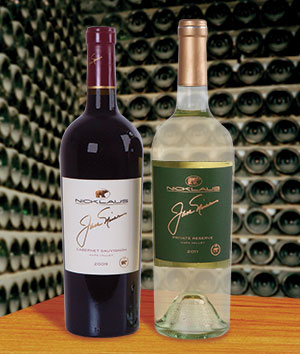
Golden Bear Meets the Golden State
Even among non-players, two names in golf are widely recognized: Arnold Palmer and Jack Nicklaus, aka the Golden Bear. Nicklaus has been a wine collector for many years, but only recently decided to pursue the production of wines carrying his name, although he had been urged to do so for quite some time.
Since Nicklaus obviously knows a lot more about golf than making fine wine, after five years pondering and researching a possible wine project, he decided to partner with Terlato Wines International for support and assistance in his wine program. The Terlato family was a natural fit. Scion Bill Terlato is a member and former club champion at the Nicklaus-run Bear’s Club in Jupiter, Florida, and the Terlato empire includes extensive vineyard holdings in northern California. Nicklaus was particulary impressed by the Terlato-owned Chimney Rock and Rutherford Hill wineries in the heart of Napa Valley during an early visit as the joint venture was being established.
Nicklaus selected from barrel the wines for his signature label. They are crafted by the Terlato winemaking team, with day-to-day winemaking being handled by Marisa Taylor-Huffaker. The fruit is sourced primarily from vineyards in the famous Rutherford and Stags Leap District appellations of Napa.
Private Reserve White 2011
This proprietary white blend is “based on sauvignon blanc,” with no further information available. It was barrel fermented, with a portion of the wine in French oak, and the balance fermented in stainless steel barriques.
It is pale gold, bordering on colorless. The nose features stone fruit, particularly peach, and green apple. The taste is surprisingly delicate, with a hint of grapefruit. The mouthfeel is nicely textured.
With only 541 cases made, distribution is limited, and, frankly, the price reflects exclusivity more than taste.
Pair this up with Clams Steamed in Sauvignon Blanc with Apples, Shallots, and Chervil, or Linguine with Halibut, Tomato-Basil Purée, Squash, and Garlic.
Cabernet Sauvignon 2009
This cabernet shows garnet in the glass, with a somewhat lighter density than one might expect. The nose features red fruit (i.e .cherry and raspberry), with hints of dark chocolate.
The taste follows through with suggestions of dark stone fruit, toasted spices, and cedar, although the fruit is rather recessive. The flavor is balanced by well-structured tannins which deliver a medium finish. If you normally prefer merlot, I suggest you give this medium-bodied cabernet sauvignon a try.
Serve this wine with Pizza with Pesto, Tomatoes, and Fresh Mozzarella, Grilled Pork Tenderloin with Merlot and Molasses, or Fried Chicken with Buttermilk and Cornmeal Crust.
http://www.jackshousefoundation.org/jack-nicklaus-cabernet-sauvignon
Top of page: https://winervana.com/blog/

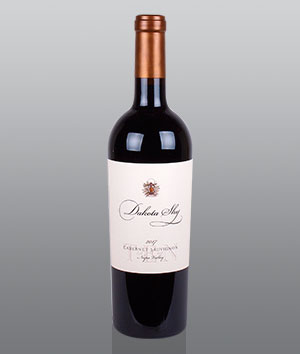 Dakota Shy was founded by industry veterans Todd Newman and Tom Garrett in 2008, determined to ultimately create a world-class estate of their own. They began by sourcing Cabernet Sauvignon grapes from a range of vineyards throughout Napa Valley.
Dakota Shy was founded by industry veterans Todd Newman and Tom Garrett in 2008, determined to ultimately create a world-class estate of their own. They began by sourcing Cabernet Sauvignon grapes from a range of vineyards throughout Napa Valley.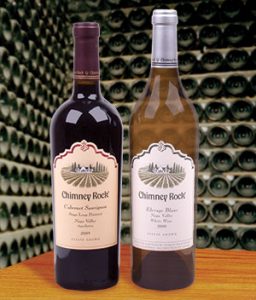 The Stags Leap District AVA is in the very heart of Napa Valley. It runs from north to south for about three miles along the Silverado Trail, and its 1,350 [very prized] acres were first planted with Cabernet Sauvignon in 1961, for which it would soon become renowned. The name comes from an outcropping of red rocks at the area’s eastern boundary, where a stag supposedly escaped his pursuers by leaping across the treacherous gap.
The Stags Leap District AVA is in the very heart of Napa Valley. It runs from north to south for about three miles along the Silverado Trail, and its 1,350 [very prized] acres were first planted with Cabernet Sauvignon in 1961, for which it would soon become renowned. The name comes from an outcropping of red rocks at the area’s eastern boundary, where a stag supposedly escaped his pursuers by leaping across the treacherous gap.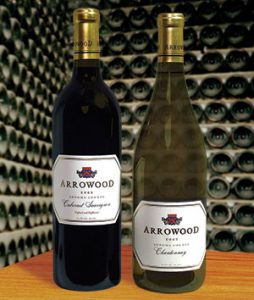
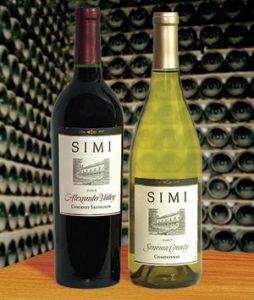 Although Napa Valley is considered by many to be California’s preeminent winemaking region, Sonoma County just to the north offers many pleasures as well, particularly the wines from Alexander Valley, which is one of my personal favorites.
Although Napa Valley is considered by many to be California’s preeminent winemaking region, Sonoma County just to the north offers many pleasures as well, particularly the wines from Alexander Valley, which is one of my personal favorites.